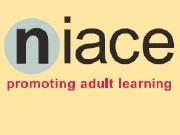HE in FE – the risks to mature and part-time students

The government’s higher education White Paper contains much that is welcome from the perspective of mature and part-time students, but there are risks and concerns too, particularly about the potential impact of the reforms on quality, student demand and widening participation.
The paper commits to opening up ‘the higher education market’ to further education colleges, among other providers, to support ‘the changing needs of employers, individuals and their communities’. This is a welcome move, for a number of reasons.
First of all, there are good economic reasons for introducing competition from colleges and other non-traditional providers. As Lord Browne noted in his review of HE funding, future economic growth will rely on adults already in the workforce retraining and preparing themselves to work in new industries by studying part-time.
Part-time students are older and most have family and work commitments around which they have to fit their studies. Claire Callender’s research for Universities UK found that 80 per cent of part-time undergraduate students are employed, most of them full-time, often studying for higher vocational qualifications.
The UK is an ageing society and the traditional model of a three-year residential degree, while valuable, is not suitable for everyone. We need a system of higher education that goes with the grain of adults’ complex lives and encourages institutions to offer more part-time provision. As the White Paper notes, FE colleges and other alternative providers can improve student choice and support a more diverse sector by creating ‘more opportunities for part-time or accelerated courses, sandwich courses, distance learning and higher-level vocational study’.
Colleges offer high-quality teaching, and flexible and innovative models of delivery, at a reduced cost. They should have the opportunity to compete and this can only be good for the quality and flexibility of teaching, particularly for those students looking for vocational, employment-focused HE.
The White Paper promises ‘a renewed focus on high-quality teaching’ and this is likely to be helped both by the enhanced role given to colleges and the emphasis on empowering students and prospective students. However, there is a clear tension between the government’s wish to raise the quality and diversity of teaching in the sector and its desire push down the costs of university education.
The stipulation that only institutions charging £7,500 or less will be able to bid for a share of the 20,000 places outside the recruitment cap will benefit colleges (most of which will charge £6,000 or less) but it will also oblige middle-ranking universities to cut costs and, in some cases, cut corners where the quality of the student experience is concerned. The prospect of private providers cherry-picking courses also raises the issue of curriculum breadth, already under pressure from cuts to the teaching grant.
Furthermore, there is a danger that the ‘unconstrained recruitment’ of ‘high-achieving’ students (those who get AAB or above at A-level) will privilege the already privileged whose higher A-level grades often reflect family circumstances rather than a superior capacity for higher study.
There are some signs in the paper that the government is beginning to think about the adult learning landscape in a more holistic way, but there remains a big unanswered question about how well demand for courses will hold up under the new system of loans for learners over the age of 24 taking qualifications at Level 3 and above from 2013–14, and the impact this will have on access. Loans could prove a significant disincentive to adults considering going on to higher study.
So, there is some good news for adults in the paper, but a lot of unanswered questions, and some real concern about the likely impact of the government’s reforms on demand for places, particularly from disadvantaged or non-traditional groups, quality and curriculum breadth. These are all issues which any system with students at its heart must address.
By Paul Stanistreet of NIACE, which encourages all adults to engage in learning






Responses